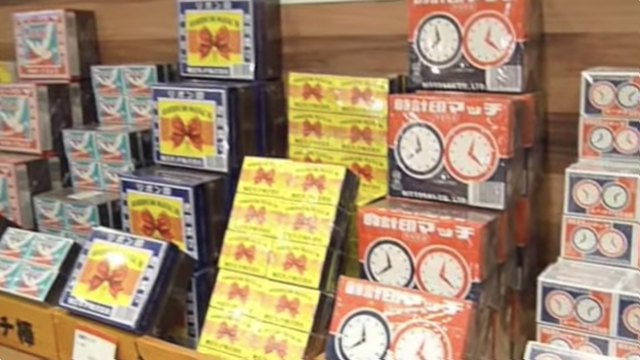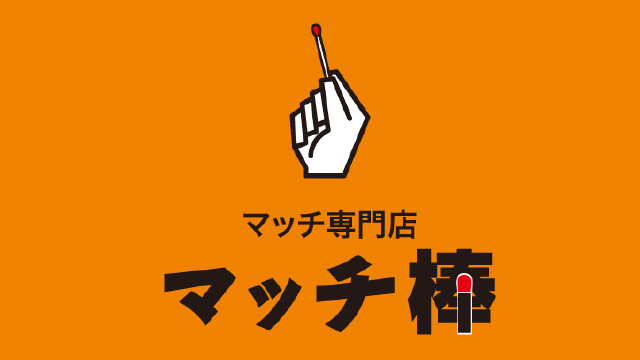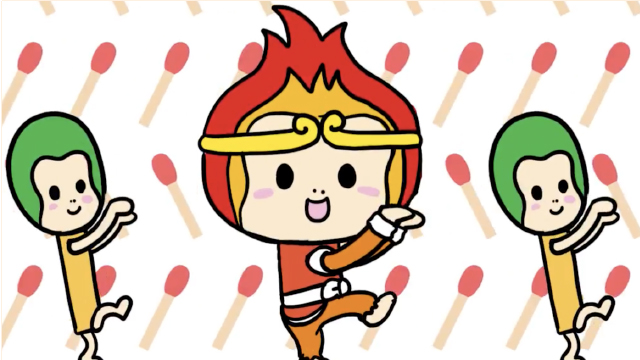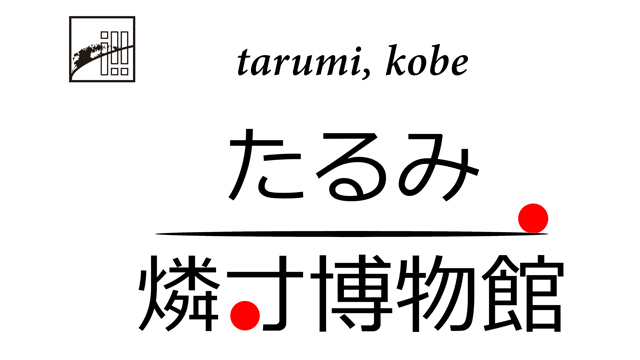Column
HOME > Virtual Museum > Column > Iwaya’s cigarette labels of Tengu (legendary mountain creature with tall nose)
Arrival of Red Tengu, King of advertisement
 The special exhibition : “Arrival of Red Tengu, King of advertisement - Meiji era’s king of cigarettes, Matsuhei Iwaya”
The special exhibition : “Arrival of Red Tengu, King of advertisement - Meiji era’s king of cigarettes, Matsuhei Iwaya”Iwaya Tengu appears in Ginza town.
Matsuhei Iwaya was born in 1849 (Kaei 2) in Satsuma (now Kagoshima Prefecture) and inherited the house of Iwaya in 1869 (Meiji 2). But since the household goods were burnt down at the Satsuma Rebellion in 1877 (Meiji 10,) Matsuhei went to Tokyo and opened a store “Satsumaya” in 1878 (Meiji 11) in the Ginza 3 Street to sell kimono fabrics and specialty goods of Satsuma. From the beginning of Meiji, the paper rolled cigarette, which was a symbol of sophistication at that time, was becoming popular replacing pipe tobacco in big cities like Tokyo; Iwaya started manufacturing cigarettes from 1884 (Meiji 17) and sold “Tengu cigarette,” the paper-roll cigarette with a mouthpiece. Iwaya himself promoted the advertisement of cigarettes vigorously, and created his original advertising strategy that was hardly seen in Japan those days: it was newspaper advertisement of paper cigarettes to sell them with premium, which was not common yet in Japan. Tengu match label – red print / Tengu match label – black print
Tengu match label – red print / Tengu match label – black print
 Tengu match label – red print / Tengu match label – black print
Tengu match label – red print / Tengu match label – black print
 Tengu cigarette match: red print / Tengu cigarette match: black print
Tengu cigarette match: red print / Tengu cigarette match: black print
 Tengu cigarette match: red print / Tengu cigarette match: black print
Tengu cigarette match: red print / Tengu cigarette match: black print
Advertising battle of Iwaya in the east and Murai in the west
Around that time, Kichibei Murai in Kyoto, who was also quick to be aware of the trend, began production of paper cigarettes knowing Iwaya’s reputation, and founded a company with the name, “Murai Brothers Shokai” in 1892 (Meiji 25,) and opened a branch in Nihonbashi Ward Muromachi 2. From then on, a violent sales battle started between Iwaya, a Kyushu man who used only Japanese tobacco leaves, and a Westernized man, Murai who united with foreign capitals and used some American tobacco leaves. Murai named his company’s cigarettes in sophisticated foreign-style such as “Sunrise” (first sold in 1891) and “Hero” (first sold in 1894), and his company’s package designs that were imitations of Western style designs won popularity in Japan. On the other side, Iwaya, a patriotic man, created packages mainly with Japanese style designs like tengu, hawk, Mt. Fuji, and family crests, applying national traits in naming cigarettes: in quality ranking the names were Golden Tengu and Silver Tengu, in cigarette size ranking names were Large Tengu and Medium Tengu: we can see thatIwaya had competed the cigarette-sales fiercely by learning his naming such as “Importation Eradicator Tengu,” “Patriotic Tengu,” “Country Benefit Tengu,” and “Happy Nation Tengu.”








[List of Tengu Cigarettes]
| Product Name | How many in a box | Price(sen) | Kind |
|---|---|---|---|
| Iwaya Tengu | 20 | 3 | Paper-rolled cigarette w/mouthpiece |
| White Tengu | 50 | 5 | Paper-rolled cigarette w/mouthpiece |
| Red Tengu | 50 | 5 | Paper-rolled cigarette w/mouthpiece |
| Blue Tengu | 50 | 6 | Paper-rolled cigarette w/mouthpiece |
| Blgack Tenu | 100 | 5 | Paper-rolled cigarette w/mouthpiece |
| Silver Tengu | 50 | 10 | Paper-rolled cigarette w/mouthpiece |
| Golden Tengu | 50 | 12 | Paper-rolled cigarette w/mouthpiece |
| Small Tengu | 50 | 7 | Paper-rolled cigarette w/mouthpiece |
| Medium Tengu | 50 | 8 | Paper-rolled cigarette w/mouthpiece |
| Large Tengu | 50 | 10 | Paper-rolled cigarette w/mouthpiece |
| Sunrise Tengu | 20 | 3 | Paper-rolled cigarette w/mouthpiece |
| Moon Tengu | 50 | 15 | Paper-rolled cigarette w/mouthpiece |
| Army Tengu | 10 | 1 | Paper-rolled cigarette w/mouthpiece |
| Navy Tengu | 10 | 2 | Paper-rolled cigarette w/mouthpiece |
| Royal Army | 20 | 2 | Paper-rolled cigarette w/mouthpiece |
| Seisei Tengu | 20 | 4 | Paper-rolled cigarette w/mouthpiece |
| Nippon Tengu | 50 | 10 | Paper-rolled cigarette w/mouthpiece |
| Patriotic Tengu | 20 | 4 | Paper-rolled cigarette w/mouthpiece |
| National Benefit Tengu | 20 | 5 | Paper-rolled cigarette w/mouthpiece |
| Importation Eradicator Tengu | 10 | — | Paper-rolled cigarette w/mouthpiece |
| Japanese-England alliance Tengu | 10 | 5 | Paper-rolled cigarette w/mouthpiece |
| Pelri Tengu | 20 | — | Paper-rolled cigarette w/mouthpiece |
| Gyokei Tengu | — | — | Paper-rolled cigarette w/mouthpiece |
| Hawk Tengu | 20 | 6 | Paper-rolled cigarette w/mouthpiece |
| Leaf Tengu | 100 | 6 | Paper-rolled cigarette w/mouthpiece |
| Strong Tengu | 100 | 28 | Paper-rolled cigarette w/mouthpiece |
| Hinoto Tengu | 50 monmes (approx. 187.5g) |
15 | cut tobacco |
| Hinoe Tengu | 50 monmes (approx. 187.5g) |
18 | cut tobacco |
| Kinoe Tengu | 50 monmes (approx. 187.5g) |
28 | cut tobacco |
Murai established Toyo Printing Co., Ltd that employed the latest technology from foreign countries, while Iwaya united with the relief printing joint-stock company founded in 1900 (Meiji 33) by Enkichi Kimura, former general manager of the relief department, and Furuya Ginjiro, the sculpture department general manager of Ministry of Finance Printing Bureau, and succeeded to print exquisite packages and advertising items such as posters and brochures that were as beautiful as Murai’s products. This is the antecedent company of present Toppan Printing Co., Ltd.
From private business to government-owned business
 Orient king of cigarette, Tengu cigarette / poster attached with calendar
Orient king of cigarette, Tengu cigarette / poster attached with calendar



